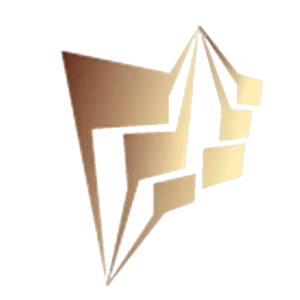This Post mainly Provides some insights about Material used for making Instruments and tools. As well as provides why some times steel is referred by country names. As we Ourselves are still learning Market terms and there reasons and uses there may be some incorrect information in this post. This post was made to help other beginners and share knowledge as we are learning. Main Intent was to make things easier for everyone.
What is Steel and types of steels? Why is steel sometimes referred by country names? What type of steel is more suitable for instruments and tools?
Steel is an alloy of iron and carbon that can have different properties depending on the amount and distribution of carbon and other elements. Steel is one of the most widely used materials in various industries, such as construction, automotive, aerospace, and medical.
There are many types of steel, classified by their composition, structure, and application. but they can be broadly categorized into four groups based on their chemical compositions: carbon steels, alloy steels, stainless steels, and tool steels. Some of the common types with some details are:
- Carbon steel:
Steel that contains only iron and carbon, with no other alloying elements. Carbon steel is divided into low, medium, and high carbon steel, depending on the carbon content. Low carbon steel has less than 0.3% carbon, medium carbon steel has 0.3-0.6% carbon, and high carbon steel has more than 0.6% carbon. Carbon steel is strong, ductile, and easy to weld, but it can rust easily and has poor resistance to corrosion and wear. - Alloy steel:
Steel that contains other elements besides iron and carbon, such as molybdenum, manganese, silicon, nickel, titanium, copper, chromium, and aluminum etc. Alloy steel can have improved properties, such as These elements can improve the strength, hardness, corrosion resistance, wear resistance, or ductility of steel. Alloy steels can be further classified into low-alloy steels and high-alloy steels based on their total alloy content. Alloy steel is normally classified by the standard number system of the American Iron and Steel Institute (AISI) or the Society of Automotive Engineers (SAE), which uses a four-digit code to indicate the main alloying elements and their percentages. - Stainless steel:
steel that contains at least 10.5% chromium as the main alloying element besides carbon and iron, which forms a thin layer of oxide on the surface that protects the steel from rusting and corrosion. Stainless steel can also contain other elements, such as nickel, molybdenum, titanium, etc., to enhance its properties. Stainless steel is classified by its crystal structure into three main types: austenitic, ferritic, and martensitic. Austenitic stainless steel has a face-centered cubic (FCC) structure and is non-magnetic, ductile, and resistant to corrosion and high temperatures. Ferritic stainless steel has a body-centered cubic (BCC) structure and is magnetic, brittle, and resistant to oxidation and stress corrosion cracking. Martensitic stainless steel has a BCC structure that can be transformed into a body-centered tetragonal (BCT) structure by quenching and tempering. It is magnetic, hardened by heat treatment, and resistant to wear and abrasion.
Tool steels contain high amounts of carbon and other elements such as tungsten, molybdenum, vanadium, and cobalt. These elements increase the hardness, wear resistance, and toughness of steel. Tool steels are used for making cutting tools, dies, molds, and other tools that require high performance.
Sometimes steel is referred to by country name because different countries have different standards or specifications for steel production or quality.
For example:
Japanese steel is known for its high quality and consistency because Japan has strict quality control systems and advanced technology for steelmaking. German steel is also known for its high quality and innovation because Germany has a long history and tradition of steelmaking and engineering. However, these names do not necessarily reflect the actual origin or composition of the steel.
But Sometimes steel is referred to by country name because different countries have different standards or specifications for their steel grades. For example:
- Japanese steel grades:
Japan has two main standards for steel grades: Japanese Industrial Standards (JIS) and Nippon Kaiji Kyokai (NK). JIS covers various types of steel products, such as bars, plates, pipes, wires, etc., while NK covers mainly shipbuilding steels. JIS uses a letter code to indicate the type of steel (such as G for carbon steel or S for structural steel) followed by a number to indicate the specific grade (such as G3101 for general structural carbon steel or S45C for medium carbon steel). NK uses a similar letter code followed by a dash and a number to indicate the yield strength (such as KA32 for mild shipbuilding steel with 315 MPa yield strength or KD40 for high-tensile shipbuilding steel with 390 MPa yield strength). - German steel grades:
Germany has several standards for steel grades: Deutsches Institut für Normung (DIN), Werkstoffnummer (W-Nr), European Norm (EN), etc. DIN covers various types of steels for general engineering purposes or specific applications. DIN uses a letter code to indicate the type of steel (such as C for carbon steel or X for alloy steel) followed by a number to indicate the average carbon content in hundredths of a percent (such as C45 for medium carbon steel with 0.45% carbon or X20Cr13 for martensitic stainless steel with 0.2% carbon and 13% chromium). W-Nr is a numerical system that assigns a unique number to each material based on its composition and properties. EN is a harmonized European standard that covers various types of steels with common designations across different countries. - Other similar names for steel by country include Chinese steel (the world’s largest steel producer), Indian steel (the second-largest steel producer), American steel (the fourth-largest steel producer), Russian steel (the fifth-largest steel producer), etc.
The type of steel that is best for beauty instruments and surgical/dental instruments depends on the specific application, requirements, and functions of the instruments. However, generally speaking, these instruments need to have high corrosion resistance, high hardness, high strength, high wear resistance, and good biocompatibility.
Stainless steel is the most suitable type of steel for these instruments because it has high corrosion resistance, hygiene, durability, and aesthetics. Within stainless steel, there are different grades that have different properties and characteristics.
For example:
– 420 stainless steel:
This is a martensitic stainless steel that has good corrosion resistance and hardness. It is suitable for making scissors, tweezers, nail clippers, razors, and surgical blades.
– 440 stainless steel:
This is another martensitic stainless steel that has higher hardness and wear resistance than 420 stainless steel. It is suitable for making knives, scalpels, dental drills, and surgical instruments.
– 316L stainless steel:
This is an austenitic stainless steel that has excellent corrosion resistance and biocompatibility but low hardness and wear resistance. It is suitable for making surgical implants, prosthetics, orthodontic wires, needles, surgical staples, dental instruments, and catheters.
Other Links:
Download our Beauty Catalogue.
Download our Surgical and dental Catalogue.
Download our Veterinary Instruments
Contact Us



